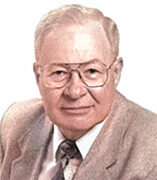
Richard Burns
Emeritus Professor (In Memoriam)
Contact
Address:
845 W. Taylor St.
Office Phone:
Email:
About
We study chemical reactions between atoms and molecules adsorbed on a surface (e.g. ceramic or metal), as well as chemical reactions which take place between a surface and adsorbed species. An accurate description of the molecule-molecule and molecule-surface interaction is crucial in understanding the early stages in any growth process and also any process which removes material from a surface. Understanding these interactions can contribute to the overall improvement in the properties (e.g. friction, wear, corrosion and catalytic behavior) of a wide variety of modern high-performance systems. Mass spectrometric techniques are used to determine Thermal Desorption Spectra (TDS) in which the desorption rate of a surface species (e.g. Mg) is measured as a function of surface (e.g. Al2O3) temperature. The intensity of a particular peak in the mass spectrum, when plotted as a function of surface temperature, clearly indicates the relative binding strength between a desorbing molecule and a surface. Thus, a more strongly bound species desorbs at a higher surface temperature. Auger electron spectroscopy is used to further characterize the surface. The information from these and other experiments is used to develop predictive models for the surface chemical processes of interest.
A. TDS of Mg on CVD Al2O3
B. TDS of O2 stabilized Mg on CVD Al2O3 The activation energy for the rate determining step in vaporization has been increased from 163 kJ mol�1 for Mg/Al2O3 (A) to 320 kJ mol�1 for Mg(ox)/Al2O3
B. TDS of O2 stabilized Mg on CVD Al2O3 The activation energy for the rate determining step in vaporization has been increased from 163 kJ mol�1 for Mg/Al2O3 (A) to 320 kJ mol�1 for Mg(ox)/Al2O3
Education
Oklahoma Baptist University, 1954
PhD, University of Chicago, 1965